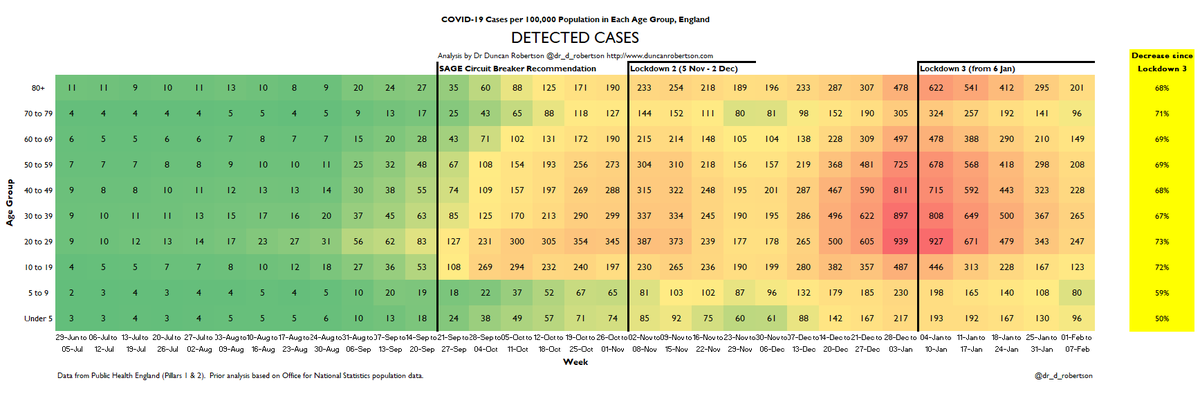
Public Health England @PHE_uk have published a report on prevalence of Covid in the university student population.
A very short thread.
Publication here:
papers.ssrn.com/sol3/papers.cf…
A very short thread.
Publication here:
papers.ssrn.com/sol3/papers.cf…
They find that fewer than 1 in 5 students (17.8%) had antibodies at the end of the Autumn term (which imples that more than 80% were susceptible to Covid).
"SARS-CoV-2 seroprevalence in 2,905 university students was 17.8% (95%CI, 16.5-19.3) ..."
"SARS-CoV-2 seroprevalence in 2,905 university students was 17.8% (95%CI, 16.5-19.3) ..."
"... ranging between 7.6%-29.7% across the five universities" (the universities are not named - 'University A' to 'University E')
"Seropositivity was associated with being younger likely to represent first year undergraduates (aOR 3.2, 95% CI 2.0-4.9), living in halls of residence (aOR 2.1, 95% CI 1.7-2.7) and sharing a kitchen with an increasing number of students ...
"(shared with 4-7 individuals, aOR 1.43, 95%CI 1.12-1.82; shared with 8 or more individuals, aOR 1.53, 95% CI 1.04-2.24). Seropositivity was 49% in students living in halls of residence that reported high SARS-CoV-2 infection rates (>8%) during the autumn term.
This highlights that nearly half of students living in halls of residence had Covid antibodies.
• • •
Missing some Tweet in this thread? You can try to
force a refresh






















